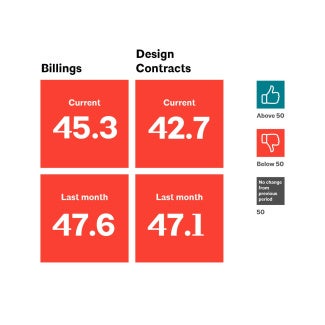Protect yourself: Use a limitation of liability provision
AIA Risk Management Program
Project risks often greatly exceed an architect’s potential financial gains. Consider limiting your total liability to your client with a limitation of liability (LOL) provision to help protect your gains against financial risks.

Limitation of liability provision
The risks an architect assumes under project agreements typically greatly exceed the financial gains they may hope to obtain from providing their services. Consider an example: assume a net fee on a given project of $100,000 (i.e., exclusive of any consultant costs and unreimbursed expenses). The expected profit might be between $10,000 and $20,000 after labor costs, associated benefits costs, and non-reimbursed expenses are subtracted. The cost to correct a design error, however, could easily exceed your expected profit. To have an architect’s financial risk bear some rational relationship to the gains they hope to achieve, an architect may want to consider limiting their total liability to their client with a limitation of liability (LOL) provision.
A very simple LOL provision may look like the following: “Except for acts amounting to willful or intentional wrongs, neither the Architect, Architect’s consultants, nor their agents or employees shall be jointly, severally or individually liable to the Owner in excess of ___________ Dollars ($___________),” with the dollar amount being equivalent to the architect’s expected profit. (Other examples and permutations, as well as explanatory and cautionary aids, can be found in Section C-6 of AIA Document B503-2017 Guide for Amendments to AIA Owner-Architect Agreements.)
Of course, any LOL provision is likely to be the result of a negotiation with your client. If you have professional liability insurance, your client may feel limiting your liability to your expected profit is unreasonable because it would preclude the client from tapping into the policy’s coverage. In that case, you may wish to consider limiting your liability to some fraction of the policy’s coverage limits so that the entire policy coverage won’t be exhausted on a single project. Just remember: You’ll still be responsible for paying the policy’s deductible or self-insured retention, which is likely to be all or a substantial portion of your expected profit in this example.
In any event, a limitation of liability provision should be tied to—or at least take into account—available insurance proceeds at the time of the claim and the potential cost of defense. Available insurance proceeds may be significantly less than the policy limits. In a bad year, a firm may have more than one claim that erodes its policy limits and reduces the available insurance proceeds. Even a mere allegation of fault may entail the need to retain a lawyer for defense purposes, regardless of ultimate liability. The cost of defense will erode available insurance coverage. Architects should discuss LOL provisions with their insurance representatives; they can help explain insurance and cost of defense issues and may also provide recommendations for the text to be used in a LOL provision.
In drafting a LOL provision, it is also important to understand waiver of consequential damages provisions. Both provisions seek to limit liability, but they are not the same. This is why a LOL is sometimes paired with a mutual waiver of consequential damages provision. A waiver of consequential damages provision, such as that found in Section 8.1.3 of AIA Document B101-2017 Standard Form of Agreement Between Owner and Architect, waives only the owner’s right to claim those damages said to flow indirectly from your wrongful acts or breaches of contract (e.g. lost rental income to an apartment landlord) but not those damages that are said to directly flow therefrom (e.g. the corrective costs to fix an improperly designed water barrier system in order to permit occupancy of the apartment building). A limitation of liability provision places a financial cap on all your liability, for both consequential damages—to the extent any indirect damages may have not been waived—as well as for corrective costs and all other direct damages.
It is also important to understand that LOL provisions can be tricky because not all jurisdictions will necessarily enforce them or may only enforce them if they are drafted carefully and in compliance with local statutory or case law. Consultation with a knowledgeable attorney is definitely warranted to be sure the protection you seek is available and enforceable. Adding a so-called savings clause may also be useful to maximize the likelihood of enforceability. Such a clause might look like the following: “In the event that applicable law prohibits enforcement of this limitation of liability provision as written then, and only then, this provision shall be deemed to be modified to provide the maximum protection allowable under applicable law.”
Whatever you negotiate with your client should recognize that your financial benefit in providing services to your client is limited to your hoped-for profit, while the client’s expected financial benefit to be derived from your services is likely substantially larger than that. An LOL provision is one tool that can be employed to better balance that equation and better protect you financially.
AIA has provided this article for general informational purposes only. The information provided is not legal opinion or legal advice. The Risk Management Program posts new materials and resources periodically.



